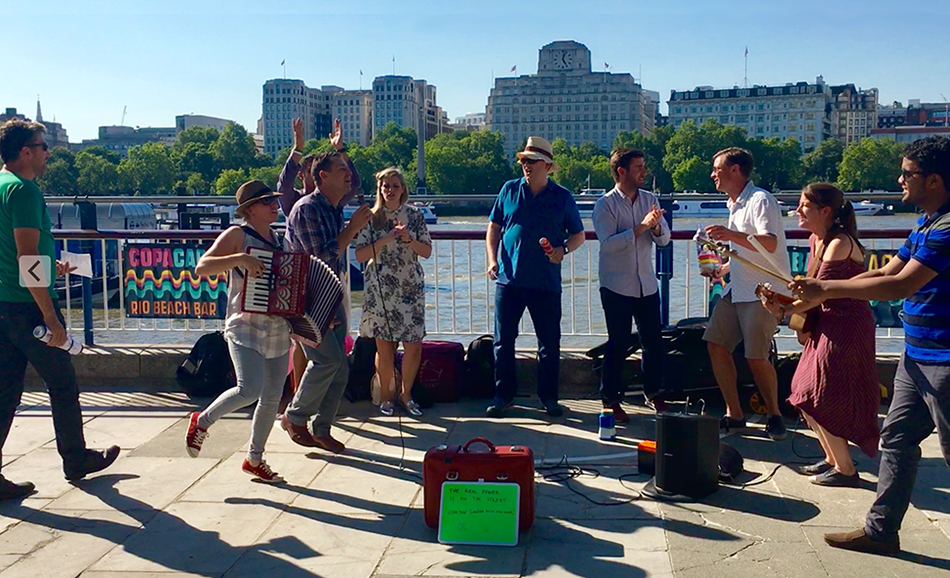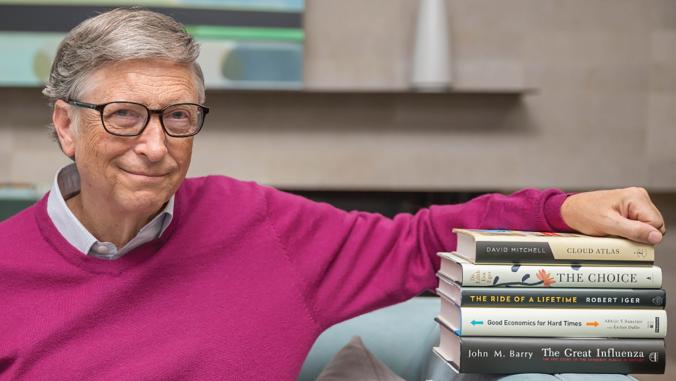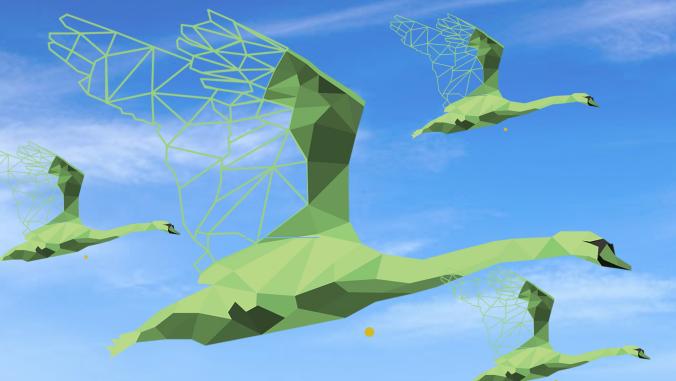The joys of busking for a better world
Why some of the world's best thinkers on sustainability recently sang for their supper on a London riverbank.

Comfort zones are strange things. You forget they are there until a different reality intrudes. I was forcefully reminded of that recently as I returned to London from Johannesburg. Within minutes of stepping off the plane, I was in virtual conversations with people in far-flung places such as San Francisco, Sydney, Tokyo and Dubai. Ping.
That’s my world and, as long as things are going fairly well, it’s also my comfort zone. But, as the Brexit vote showed, it’s now an increasingly uncomfortable reality for millions of people who must compete with low-paid workers elsewhere in the world — and for many older people who see their communities absorbing migrants whose cultures and expectations can be very different.
The Brexit vote pricked my personal and geopolitical reality bubble, no question, but it took a very different experience to jolt me awake in the professional realm. And I brought it upon myself.
The Brexit vote pricked my personal and geopolitical reality bubble, no question, but it took a very different experience to jolt me awake in the professional realm.
It came in the form of an invitation-only Climate Quest, organized by Leaders’ Quest and We Mean Business, and funded by the IKEA Foundation. Held in deeply cool venues in up-and-coming parts of London, it looked fascinating on paper. Some 50 climate experts and activists from around the world would convene and learn from each other. I couldn’t wait to join.
But I was always bad at reading exam questions — and here I really should have reviewed the program of events more carefully. Leaders’ Quest is rightly famous for jolting top executives out of their reality bubbles. Some years ago, for example, I had spoken at one of its quests. In this case it involved the CEO and 140 executives from the U.K. bank Barclays. They flew into Nairobi and were then immersed in the bruising everyday realities of slums around the city.
As you like it
Our first evening in London involved a stunning session run as a one-woman show by Phyllida Hancock of Olivier Mythodrama. She explained how Shakespeare had written four great plays in one year, including "Henry V," "Hamlet" and "As You Like It." And she promptly began to take us through the last of these, telling the story, performing some of the roles and explaining the psycho-dynamics. Mind-boggling.
She showed how the story plays out across two radically different worlds, the royal court and the forest. People in these two realities play by very different rules, with the people of the forest often the kinder and more civilized of the two. It struck me as I listened that my working life has played out across the divides between business (which you could view as the court) and civil society (the forest).
When I started out, the chasm between court and forest, business and civil society, at least as represented by activist NGOs, yawned wide. But the people on either side of the divide generally were educated, thoughtful and interested in securing a better future. So with enough time and effort, you could spark useful conversations and partnerships.
There will always be tensions between competing visions of change. The morning of the second day of the Climate Quest involved 10 of us visiting Europe’s largest urban regeneration project, in London’s White City. Here a group called White City Noise has interceded between local communities, the local government authority and several developers to feed new thinking into the process.
We met the key man atop a high-rise until recently had been occupied by BBC TV — and it was an odd feeling to know that three weeks later the floor we sat on would be empty, if momentarily dust-streaked, sky.
Impressive though White City Noise’s work is, the real dent in my comfort zone came later that day. We headed across to a park near Waterloo Station to meet two street buskers. These energetic young women — one Portuguese, the other half-Portuguese — took us under their wings, teaching us to make our own musical instruments, spurring us to write our own climate change song and then, to my utter dismay, telling us that the next step would be to perform the song on London’s thronging South Bank.
And my verse came first.
How do you distill a complex, fact-saturated story to its essence?
So how do you write a song and sing it in a way that connects with ordinary people intent on ice cream, roundabouts and off-the-wall skateboarders? How do you distill a complex, fact-saturated story to its essence? In the end, we opted for a measure of irony, taking the song "Don’t Worry, Be Happy" and contrasting the jolly refrain with a sequence of lyrics saying goodbye to fossil fuels and hello to renewables.
All this, serendipitously, sung against the backdrop of Shell Mex House across the river, which once housed both Shell and BP.
Hearts-and-minds success?
To be honest, this wasn’t a runway hearts-and-minds success for the passers-by, but it did offer a crucial lesson. While spotlighting how a good team can move you beyond your comfort zone, it also underscored just how difficult it can be to communicate extraordinary threats and opportunities to ordinary people in their everyday realities. But as the push-back against globalization and new technology grows, we must get a lot better at this.
One obvious step forward might be to hire better musicians and lyricists. Another would be to build better connections between the growing spectrum of people and organizations working across the climate battlefront, with this first Climate Quest certainly rating five golden stars.
So what next? Well, if I could give one gift to every member of the Global C-Suite — the decision-makers and advisers occupying the boardrooms and C-suites of the world’s 1,000 most influential businesses — it would involve sending them all off on a quest, an experiential learning journey. An out-of-their-box adventure exposing them to the emerging realities behind those prettily colored boxes representing the Sustainable Development Goals.





